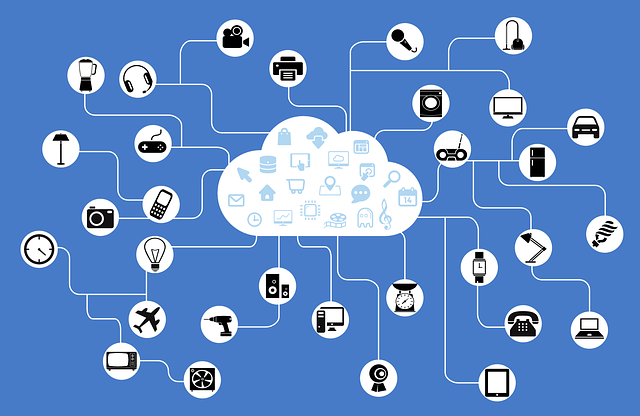
Are We Ready for the Internet of Things?
Constant connectivity, once an enthusiastic pipe dream, is now so prevalent that we treat this technical marvel with practical nonchalance. It’s perhaps testament to this revolutionary success that we’ve become so accustomed and accepting of it, and that might be why technical analysts are predicting that soon, everything we own will make use of a constant, shared connection to one another –The Internet of Things.
It’s not an entirely new idea. As far back as 1989, networking developer John Romkey created the internet-enabled toaster as part of a friendly challenge by Interop President Dan Lynch. Of course, at this point the internet wasn’t a household name, and the toaster’s abilities were comparatively crude, but the theory had already been proven.
It was a deliberately daft wager, but fast forward 28 years and gadgets like Toasteroid can be marketed in complete earnest; defying expectation by connecting to your mobile and burning subliminal messages into bread.
It’s undoubtedly a tentative dip-of-the-toe into the Internet of Things, the application arguably pointless, but it certainly demonstrates that the control and unification of devices is a possibility waiting for a breakthrough.
Sadly, few memorable instances of the Internet of Things actually exist; when they do, they’re typically for all the wrong reasons. A vulnerability in Samsung smart fridges allowed hackers to steal Gmail login credentials in 2015, whilst another viral instance saw numerous smart fridges spamming kitchens with pornographic emails. When my current, run-of-the-mill dumb-fridge can keep my lettuce fresh without shouting my credit card details and sexual preferences out of the window, the ability to see my food being chilled from 3 different camera angles doesn’t feel like ample compensation.
So what are the Benefits?
The challenge currently facing the Internet of Things is justification; if it didn’t already have a screen on it, the ‘Smart’ equivalent rarely proves to be relevant. The benefits of your fridge, microwave or kettle being connected to the internet – and yes, these have all been attempted – aren’t entirely apparent, and only of value to the satirically lazy.
Yet despite these questionable applications, the theory behind the IOT is quite sound. There exist plenty of household functions that we would love to control from home; the peace of mind knowing we’ve turned off the gas, or that we can do with a tap of our smart phones, is a welcome convenience. Smart thermostats, for example, take an innocuous household feature and adapt their simplicity to the smart phone interface. It’s one of the more convincing uses, providing an away-from-home solution to an ongoing cost. Similarly, smart meters – though not technically shared with your home Wi-Fi – do at least network with energy providers to keep your energy bills up-to-date and accurate.
It’s tempting to stick a connection on every household appliance in order to simplify life – smart kettles will boil in time with your smartphone alarm, for example – but coupled with the aforementioned security concerns and how little time these functions truly save, there’s a balance between cost and benefit which needs to be sensibly considered.

Effects on Business
However, away from the home, it’s not difficult to see the IOT becoming an invaluable commercial asset. In fact, one of the most popular connectivity devices – the Amazon Echo – arguably benefits the corporation as much as the consumer; the fact that it stores the purchase data of Prime customers and advertises Amazon services through programmed responses is a blatant testament to this.
It’s likely to become a give-and-take relationship between buyers and sellers, where the device’s connectivity is provided with the implied consent that the manufacturers will be collecting the user data; fine, so long as lines can be clearly drawn. The recent ransomware attack on the NHS, and the theft of countless patients’ data, demonstrates the vulnerability of our information. If any is collected by corporations, it should continue to be limited, if not regulated.
Outside of sheer commercial grunt, however, the ideas about how the internet can change the ways we work are exciting indeed. Imagine being able to operate factory machinery, or stock management, from a remote location. It’s absolutely possible, and most importantly, makes a lot of sense. Given that remote workers are considered to be more pleased and productive when working from outside work, the ability to do exactly that makes for more productive, more satisfied workers.
There are concerns, naturally, that such automation might eliminate jobs that were once reliant on human presence; but it will also create more, with software and security engineers updating and maintaining the systems.

How Soon?
In terms of the Internet of Things becoming an overnight sensation, let alone one that will be readily adopted by the average business or homeowner, this onlooker remains sceptical. Yet, its benefits and potential cannot be ignored. This presents a revolutionary new way of working and living that, used correctly, can strike the balance between convenience and productivity we all want more of. Yet the idea that all household appliances can and should be operated from a single connection is questionable, and until the security can be assured, remains ill-advised.
Perhaps, when creating for the Internet of Things, developers need to stick to two simple rules; “Keep it Simple, Stupid”, and “Just because you can, doesn’t mean you should”.
